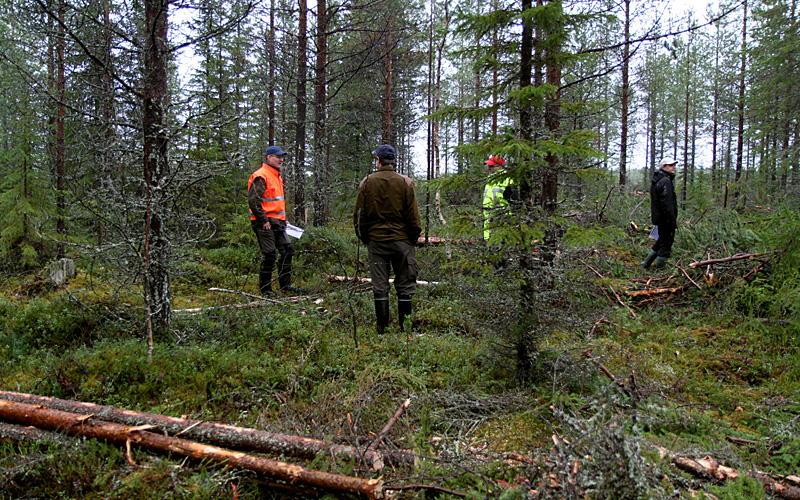PEFC defines the level of Finnish forestry

The PEFC forest certification covers almost all commercial forests and sets the most demanding criteria for forestry in Finland. This is why it defines the level of Finnish forestry in practice.
The most significant effects of the PEFC forest certification have been seen in forest biodiversity. A report published by Gaia Consulting states that the most important effort has been the leaving of retention trees.
PEFC demands leaving ten retention trees per hectare in connection with regeneration fellings. These trees must never be taken out of the forest, but must be allowed to decay where they have stood.
Thanks to PEFC, the amount of decayed or decaying wood left annually in Finnish forests is 500,000 cubic metres. The total amount since the PEFC system was introduced in Finland comes up to seven million cubic metres.
The effect of leaving retention trees can be seen in many ways. For example, introducing the latest red list of endangered species in Finland in 2010, the researchers said the forest ecosystems in Finland are doing better than other ecosystems as regards endangered species, and the biggest single reason for this is the leaving of retention trees.
PEFC changed attitudes towards protection
PEFC sets clearly higher demands on forestry than other regulations applied in Finland do, despite the fact that they are also strict. According to Gaia Consulting, 14 out of the 29 PEFC criteria are stricter than in other systems. In addition to this, nine criteria provide details on how to interpret the standard set by legislation.
All in all, 20 million hectares of Finnish forests are certified according to PEFC. Finland is the third largest PEFC country in the world, preceded by Canada and the United States.
Thus, PEFC certification covers more then 90 percent of Finnish forests. Together with the fact that certification sets higher demands than other regulations, this means that in practice it is the PEFC certification that sets the level of Finnish forestry.
PEFC has affected attitudes, too. While know-how on the selection of retention trees and awareness of valuable, protected habitats have increased, attitudes towards protection in general have also become more positive.
This means that work for forest nature protection is now a routine component of forestry activities. For forest owners it is particularly important that the change has been voluntary.

More coherence in employers’ responsibilities
Almost all of Finnish forest legislation has been revised within a couple of years. PEFC is not a system operated by public authorities; instead, it is run by the private forest sector. Despite this, it is of some significance for authorities.
According to Gaia Consulting, PEFC has had an evident role in communicating about the changes in forest legislation and in promoting its implementation.
Although black-market activity is only a minor problem for the Finnish forest sector, PEFC has had an important role in creating more coherence in employers’ responsibilities.
The Finnish forest sector includes a great number of enterprises: the majority of them are harvesting companies employing fewer than ten persons on the average, the second largest group is formed by local associations of family forest owners, called forestry management associations, and finally, there are numerous small companies offering forestry services.
All in all, thousands of contracts are in force all the time in the forest sector in wood harvesting and transport, as well as in forest improvement activities.
Plenty of advice and training available
PEFC has actively promoted the level of know-how of family forest owners. One-on-one advice has been given to a total of 175,000–185,000 forest owners, and advice to groups has reached 25,000–43,000 forest owners.
Various training events have attracted 75,000–90,000 forest owners. 900–1,200 training courses have been organised and 1,500–2,000 information bulletins have been published.
And all of these figures are annual averages.
The report by Gaia Consulting also includes some recommendations. They consider that PEFC has communicated a clear message of accountability to the international markets, but the message should focus more on forest biodiversity – both by applying stricter criteria and by communicating about them.
This is not the first time that we hear this recommendation. There is a difficulty, though: PEFC is an international cooperation effort and Finland cannot affect its priorities on its own.
A considerable strength of PEFC is that it guarantees the origin of wood raw material down to the level of a single forest compartment. This should be of significance when, for example, the European Union strives to restrict the use of illegal wood through legislation.
Kirjoita kommentti